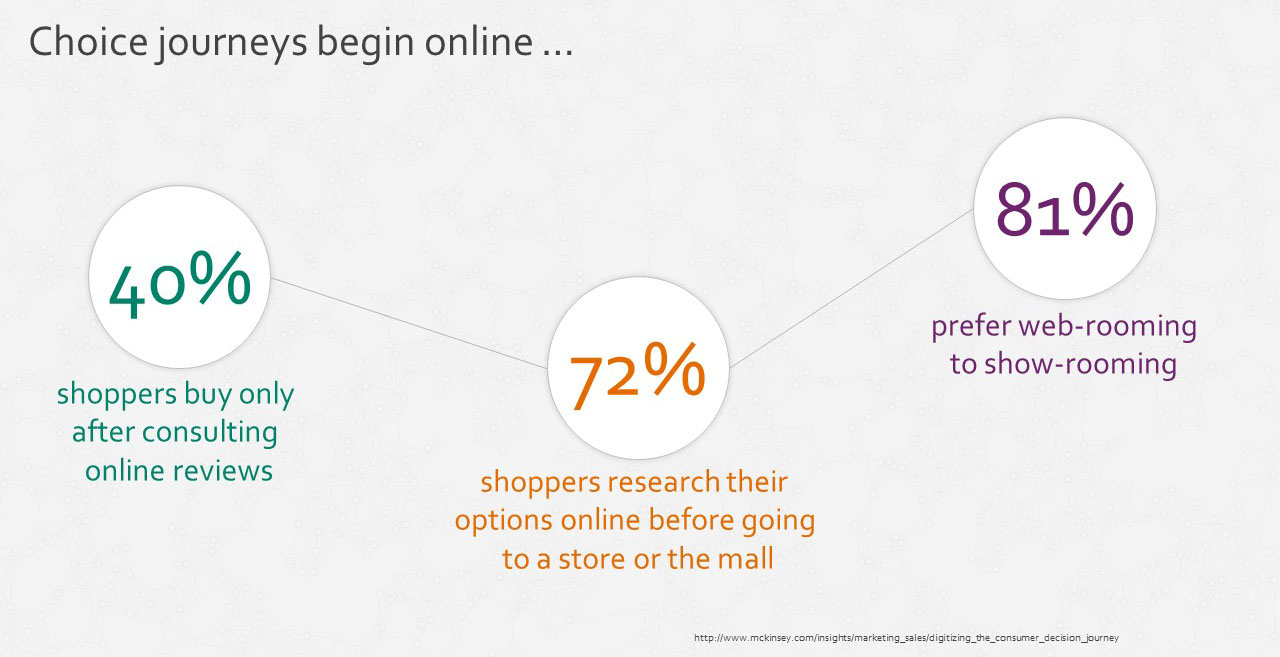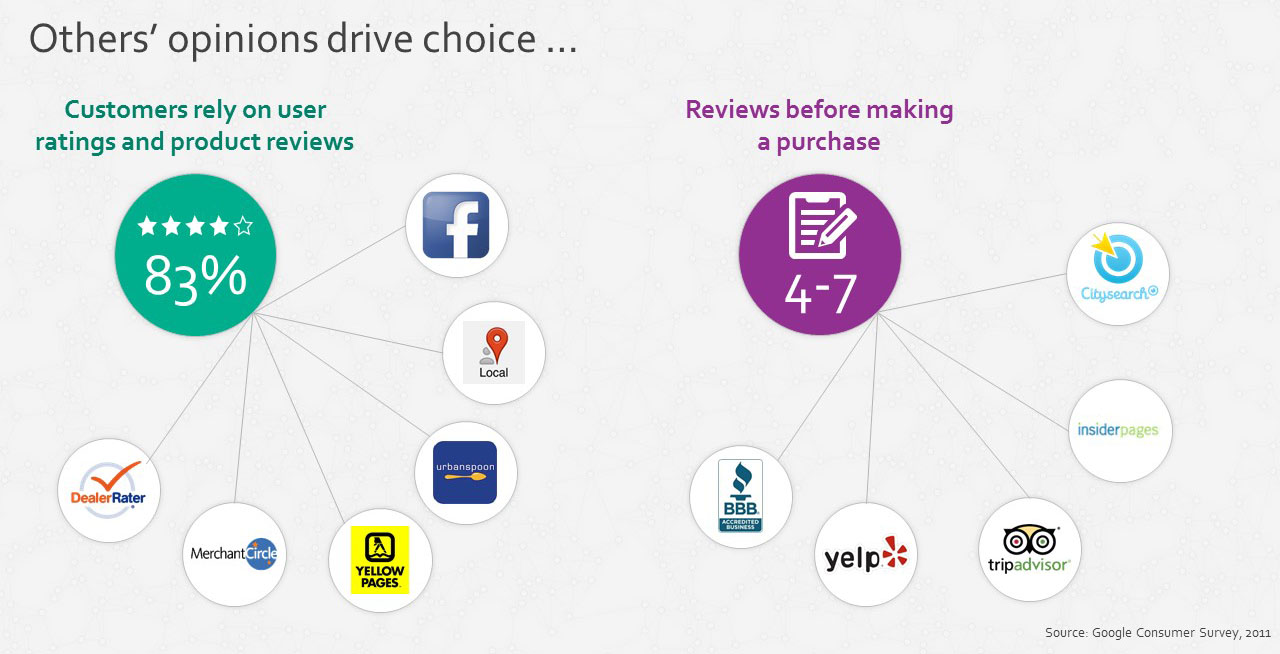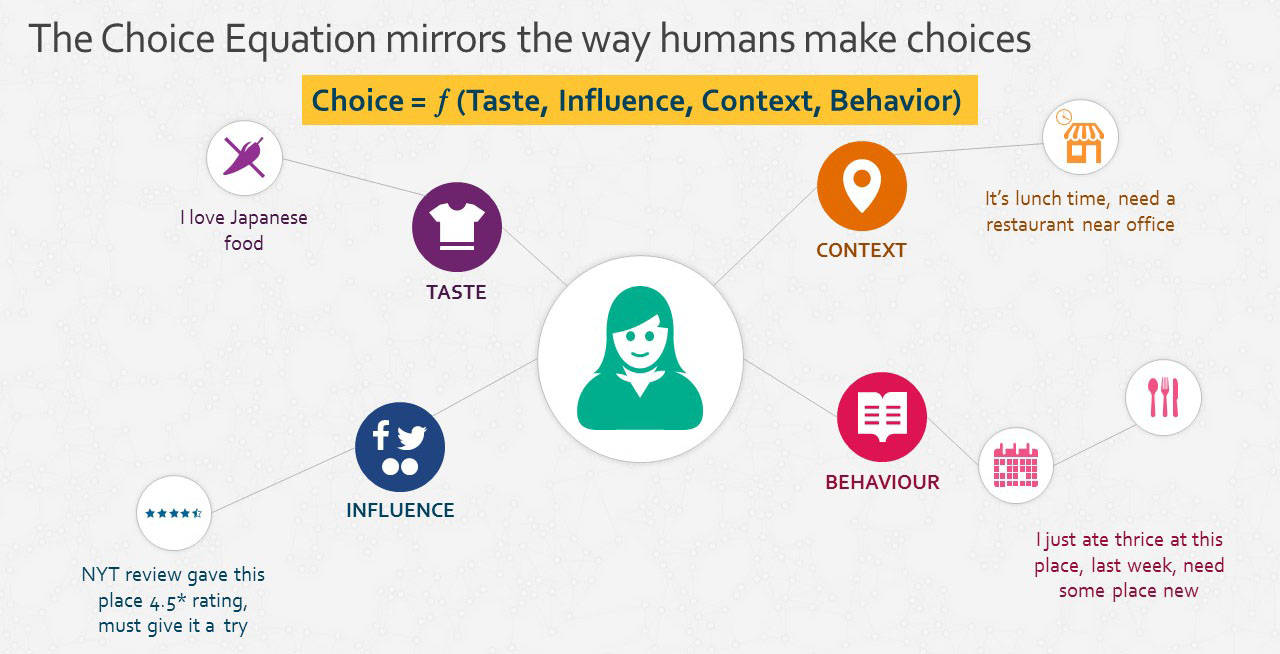Today, there’s a lot of buzz around a few words.
Data: the big, the small, the relevant.
Social media, contextual marketing, going viral, and influencers.
Digital advertising, mobile first, e-commerce.
Everyone splashes around in the shallow end of tech trends. They convince themselves that they are swimming in the deep waters of fundamental changes in consumer behavior.
But very little is known about the central actor in this plot – the new consumer. Someone who is tickled pink and overwhelmed, all at the same time!
This is why these two important concepts that are changing the way we market to consumers, matter.
Influence Mix
The first is the Influence Mix, a concept elucidated brilliantly by Simonson and Rosen, in their book Absolute Value.
In their world: a consumer purchase decision (D), is a function of that consumer’s prior preferences and experiences (P), plus information from marketers (M), and inputs from other people (O).
So, D = f (P + M + O).
This is a zero sum game. The more the consumer relies on one, the lower her need for the others.
Here’s the critical change that we all know instinctively. In recent years, ‘O’, the inputs of others, has taken on a dramatically large share of the decision.
The typical choice journey today begins online.

We trust others far more than we do brand advertising.

And that opinion plays a large part in our decision. In fact, we’d rather trust a perfect stranger’s views online than a person in flesh and blood at the store.

This is true across every category, but predominantly so in those where the purchase decision matters a lot to them (restaurants, movies, shopping for fashion or electronics, cars, etc.).
Simonson and Rosen then talk about how to determine how much ‘O’ contributes to, in any category. They plot where any category lies on the ‘O’ continuum. The shocking conclusion is that branding (‘M’) takes on less importance and that market share volatility is high where ‘O’ predominates.
Choice Equation
The second concept is the Choice Equation, an idea that our research into one of the world’s largest TasteGraphs reveals.
The choice equation measures the relative importance of consumers’ own preferences, other’s inputs, context and past behaviours in determining how consumers make choices.
You could say that the Choice Equation brings the Influence Mix idea to life. (Full disclosure: the Choice Equation is an idea developed by me for my start-up Crayon Data, which has been put into action in our product Maya).
The Choice Equation is a simple idea that cuts through the haze of sentiment analysis, social media, online reviews, and other such concepts.
Choice = f (Taste, Influence, Behaviour, Context)
Simply put, it says that our choices are a mix of our tastes, the influences on us, our beliefs as reflected in our past behavior, and the context in which we make the choice.
Clearly, it follows that EVERY choice has 3 main characteristics:
1. It is highly personal.
2. It changes for each type of choice we make.
3. It changes within each type of choice based on the current mix of these 4 factors.

A practical example is shown above.
Sometimes, I choose where to eat based on
– My tastes (e.g. I love Japanese food… I don’t eat red meat…).
– Other’s views (the NY Times recommends this place …my friend Zara, the foodie says this is the best restaurant in Osaka…).
– Behaviour (I have not eaten at my favourite restaurant for a week… I just ate Japanese twice this week…).
– Context (it’s my anniversary…I need a special place… or it’s raining so I can’t go far from where I am…).
How do you put the Influence Mix and the Choice Equation to work?
Marketers would love to have a high fidelity way to measure the Influence Mix and the Choice Equation and then use it to target consumers.
Consumers would love to ease the cognitive load of making each choice, that today falls exclusively on them.
In my next post, I will talk about the challenges in implementing these two concepts. In a third related post, I will talk about how to actually find a solution that works at scale and in real-time. In my 4th post, I will talk about what we have learnt about preference ladders and choices. And in my final one, I will talk about why the marketer’s obsession with offers is distracting us from the real problem – solving choices.
How maya.ai leverages AI to deliver magical online shopping experiences
Shopping...